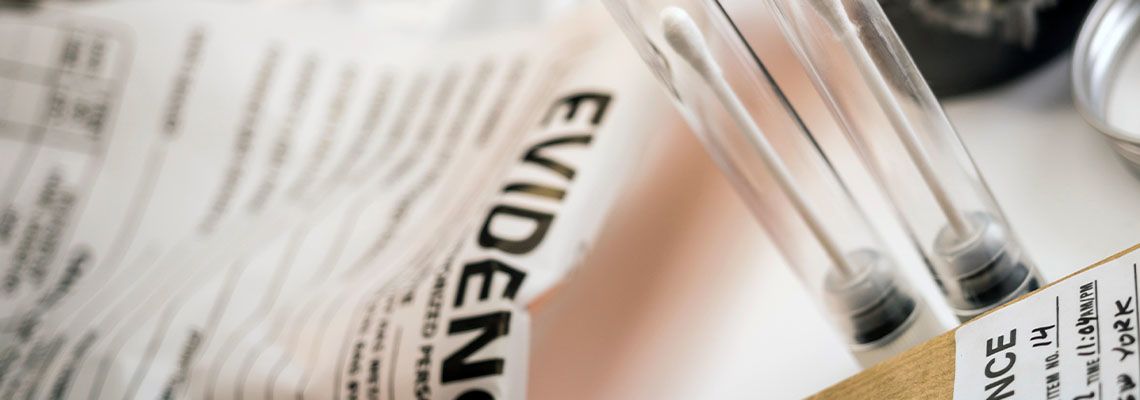
Understanding DNA Used as Evidence
Perhaps nothing has altered the outcome of criminal trials and post-conviction measures as much as deoxyribonucleic acid, better known as “DNA.” DNA is evidence of our hereditary material, unique to every individual.
Today’s sophistication with gathering and analyzing this genetic material is why DNA used as evidence has become increasingly common. It is sought after by prosecuting attorneys attempting to convict someone of a crime. It is equally important to those charged with crimes and those already convicted of crimes who hope DNA can exonerate them.
This biological evidence used in court can cut both ways. That is why it’s important for you to understand how it can be collected and used as evidence, and how reliable that evidence may be.
The criminal defense attorneys at Haskett Williams Monaghan Attorneys at Law understand the opportunities and threats posed by DNA evidence in matters involving our clients in Bend and the surrounding areas including Redmond, Sun River, Prineville, and Sisters, Oregon. Here are a few things you should know.
How Is DNA Collected and Preserved?
DNA can be identified in samples of saliva, blood, bone, urine, feces, semen, hair, teeth, body tissue, and cells. Because the collection and analysis techniques and technology continue to improve, DNA can be extrapolated from increasingly smaller and degraded samples of genetic material.
What can be used to obtain DNA? The sources can be collected from virtually any place they made contact, such as:
articles of clothing,
bedding,
toothbrushes,
glasses someone drank from,
weapons and tools,
hairbrushes and combs,
fingernail scrapings and sexual assault kits,
cigarette butts, and
condoms.
The DNA must be collected correctly so the sample is not degraded in some manner. The chain of evidence from the scene, the forensic team, and analysis must be strictly adhered to. Moreover, only certain people are qualified by education, certification, and expertise to analyze and preserve DNA samples. In fact, DNA samples preserved from cases even long before analysis was possible can be used to exonerate someone convicted of a crime.
A DNA sample, in and of itself, does not identify the person to whom it belongs. Samples from the crime scene must be compared to samples collected from suspects. Samples are also used to rule out certain people whose DNA might be at the scene for other reasons, such as other household members, first responders, and law enforcement personnel.
The legal landscape regarding how people can be compelled to provide DNA samples is ever-changing. There is both a need to protect privacy as well as identify people who have committed crimes. Some states require DNA samples of all people arrested for any crime. Oregon, however, is one of the few states without this requirement. If someone doesn’t volunteer DNA, it will take a court order to secure it.
How Is DNA Used as Evidence?
Using DNA evidence during criminal trials is common if it exists and if it is relevant to the case. The presence of the DNA of someone charged with a crime at the crime scene, in and of itself, is insufficient evidence of wrongdoing.
DNA collected at the crime scene is most compelling when someone’s DNA otherwise has no reason to be there. Moreover, the DNA presented as evidence must have been subject to an airtight chain of command and analysis to be used for or against the person on trial.
You know that DNA is widely accepted as key and credible evidence in criminal trials today. In fact, it can play an outsized role, leading to the conviction of someone where no other convincing evidence exists.
How Effective and Accurate Is DNA Evidence?
DNA evidence collected, analyzed, and preserved correctly is extremely accurate. Although its accuracy is only that it belongs to a certain individual. It is not an automatic indicator of guilt for a crime.
DNA can be at a crime scene for other reasons, such as transference. For example, you shake hands with someone who later picks up an object and strikes someone else with it. Your DNA could be transferred to the object from the hands of the person who committed the crime.
DNA can be at a crime scene by accident or because someone else placed it there. You lend your scarf to someone who leaves it at the scene or places it there intentionally.
DNA evidence can also be incorrectly tested and analyzed. At the end of the day, a human being will provide the analysis that may convict you, and humans make mistakes.
The existence of DNA evidence in a case against you is one more important reason why you should be represented by an experienced criminal defense attorney who can challenge the validity of the evidence.
Can DNA Evidence Be Used Post-Conviction?
There are a handful of states whose laws don’t provide for use of DNA for post-conviction relief. Fortunately, Oregon is not one of them.
Post-conviction relief based on DNA evidence is most often used if the original DNA has been properly preserved as part of the evidence used to convict someone, and if that DNA was not tested before or can now be tested due to advances in technology.
Overturning a conviction under any circumstances is always a tremendous challenge. However, DNA evidence can be the key to doing so in an increasing number of cases.
Rely on Our Experienced Guidance
You can’t just assume that every criminal defense attorney understands DNA evidence and its role in making or breaking a criminal case. Rest assured that our attorneys do, and we are prepared to use it to our clients’ advantage or to challenge it if it’s being used against them.
If DNA evidence is relevant to the criminal charges against you, call Haskett Williams Monaghan Attorneys at Law in Bend, Oregon now.
